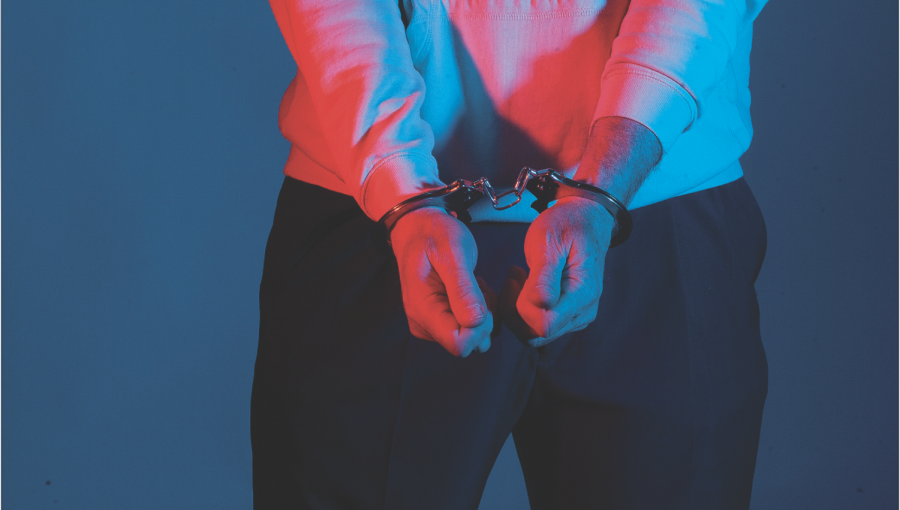State’s attorney: Students not large source of crime
March 29, 2022
Crime rates can tell a prosecutor, judge, jury, the public or citizens many things, but one of the hardest discoveries in Charleston is discovering if the crime in this college town is caused by the university students or the Charleston citizens who have been here all along.
With Charleston housing Eastern Illinois University, the city is bound to see changes since the university was founded here in 1895.
One of those changes has been an increase in crime over the years, which raises the question of who is committing these crimes.
Those arrested for these crimes could be mostly Eastern students, Charleston residents or people visiting from cities with a higher crime rate to visit their friends at Eastern.
However, while looking at Coles County felonies from 2021, there aren’t very many committed by Eastern students or Eastern student’s friends from cities with higher crime rates.
In fact, of the 636 felony cases filed in 2021 in Coles County available on judici.com, only two, 0.3%, list Eastern students as the individual being prosecuted for allegedly committing the felony.
Felonies include more serious crimes and carry more severe sentences than misdemeanors, which cover less serious offenses, which results in less severe sentences.
This number didn’t surprise Coles County State’s Attorney Jesse Danley.
Danley said that it wasn’t Eastern students committing crimes today. He said a bump in crimes related to Eastern students happened when the police used to crack down hard on college students drinking underage and college parties where alcohol is involved.
“Eastern students cause far less crime than the locals, absolutely,” Danley said.
Of the two felonies committed by Eastern students, one was charged with possession of a lost credit or debit card, which is a Class Four felony, the lowest level felony charge in Illinois, which can still result in prison time, fine or other penalties despite being a lower felony.
For the second felony, the Eastern student was charged with possession of less than 5,000 grams of cannabis, which is a Class One felony, the second highest felony charge behind Class X. Class One felonies can result in more severe sentences than a Class Four felony would.
Eastern students’ friends from larger cities with an increased crime rate were also not the main cause for Coles County felony charges from 2021.
Of the 636 felonies from 2021, 214 cases included an individual between the ages of 18 to 29-years-old charged with a felony.
In those 214 cases, 10 of those charged resided in Chicago or Cook County and three resided in the Champaign-Urbana area.
The addresses of each offender of the 214 felony cases are located within:
- Coles County– 158 cases
- Charleston- 62 cases
- Mattoon- 66 cases
- Oakland- 1 case
- Lerna- 3 cases
- Humboldt- 1 case
- Rardin- 2 cases
- Unknown/Homeless- 23 cases
- Eastern students- 2 cases
- Douglas County- 10 cases
- Cook County- 10 cases
- Chicago- 7 cases
- Clark County- 8 cases
- Shelby County- 4 cases
- Cumberland County- 4 cases
- Champaign County- 3 cases
- Macon County- 3 cases
- Effingham County- 3 cases
- Kankakee County- 2 cases
- The following counties each have 1 offender residing there: Sangamon, Edgar, Jackson and Crawford
The Eastern students were added to Coles County despite not permanently residing there due to temporarily residing at Eastern.
The two Eastern students are from Casey, Ill. in Clark County and Baton Rouge, La.
Outside of Charleston, a look into other college towns reveals a similar scenario within the crime rates.
Champaign County Circuit Clerk Susan McGrath said that while she didn’t know the accurate data for how many crimes in the county are committed by University of Illinois at Urbana-Champaign students, Champaign County had over 1,000 more felony cases in 2021.
Yet, she doubts very many felonies were committed by UIUC students, and there would be only a few misdemeanors committed by UIUC students.
Most crimes by college students tend to occur on campus.
A U.S. Department of Education report said that from 2009 to 2018 overall on-campus crimes reported a 16 percent decrease.
However, from 2014 to 2017 there was an eight percent increase in the number of reported on-campus crimes, despite the rates from 2009 to 2018.
Thus, Eastern and UIUC are not outliers – college students in general do not contribute much to crime rates in the communities their college is in.
Madelyn Kidd can be reached at 581-2812 or at mekidd@eiu.edu.

















![[Thumbnail Edition] Senior Foward Macy McGlone, getsw the ball and gets the point during the first half of the game aginst Western Illinois University,, Eastern Illinois University Lost to Western Illinois University Thursday March 6 20205, 78-75 EIU lost making it the end of their season](https://www.dailyeasternnews.com/wp-content/uploads/2025/03/WBB_OVC_03_O-1-e1743361637111-1200x614.jpg)




















































